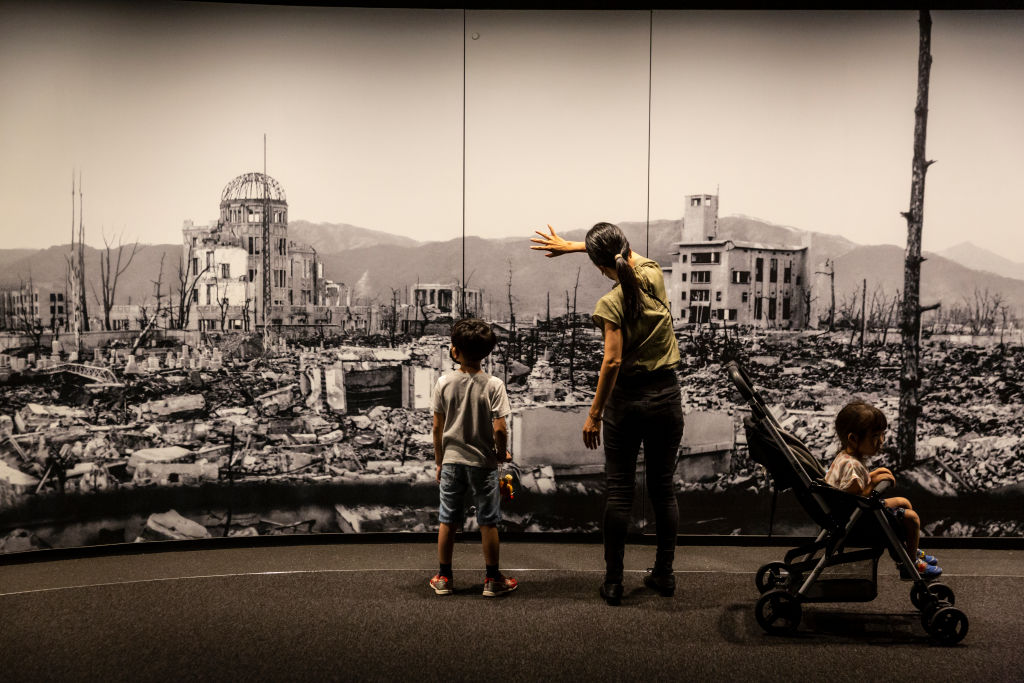
Nuclear weapons have been a feature of international relations since August 1945, when the United States dropped two of them on Japan to hasten the end of World War II. None has been used since then, and they arguably helped keep the Cold War cold by forcing a degree of caution on both sides of the confrontation between the US and the Soviet Union.
Arms-control negotiations succeeded in limiting both countries’ nuclear arsenals and stopped or slowed nuclear proliferation. Today, only seven other countries (the United Kingdom, France, China, Israel, India, Pakistan and North Korea)
possess nuclear weapons.
The question now is whether we are on the cusp of a new era of expanding nuclear arsenals, a more prominent role for them in geopolitics and efforts by more countries to acquire them. Adding to the danger is the sense that the
nuclear taboo against possessing or even using nuclear weapons is fading, owing to the passage of time and to the emergence of a new generation of so-called
tactical nuclear weapons that imply less catastrophic results and therefore may seem more usable.
Russia’s war against Ukraine has made the arrival of this new era more likely in several ways. After the breakup of the Soviet Union in 1991, Ukraine
surrendered the nuclear weapons that remained on its territory in exchange for security assurances. Since then, Russia has invaded twice, an outcome that might persuade others that giving up nuclear weapons decreases a country’s security.
Then, in the wake of Russia’s second invasion earlier this year, the US
ruled out direct military involvement on behalf of Ukraine owing to a concern that dispatching troops or establishing a no-fly zone could lead to a nuclear World War III. China and others could see this as evidence that possessing a substantial nuclear arsenal can deter the US or at least impel it to act with greater restraint. Most recently, against the backdrop of significant battlefield
setbacks, Russian President Vladimir Putin has
threatened to use nuclear weapons in or near Ukraine in an effort to intimidate Ukrainians and force European governments and the US to rethink their support for Kyiv.
Developments elsewhere have also contributed to a rethinking of the value of nuclear weapons. Regimes and leaders in Iraq and Libya were
ousted after abandoning their nuclear-weapons programs, which might lead others to consider the advantages of retaining or developing nuclear capabilities. North Korea’s regime, for its part, remains secure as it continues to
expand its nuclear arsenal. The world has likewise learned to live with Israeli, Indian and Pakistani nuclear arsenals.
The danger is that more nuclear weapons in more hands increases the odds that one or more of these unimaginably destructive weapons will be used. Deterrence and responsible custodianship cannot be assumed. Possession of nuclear weapons also has the potential to provide something of a shield that could make non-nuclear aggression more common. Even the belief that a country was moving to develop nuclear weapons could trigger military action by worried neighbours, possibly leading to a larger conflict.
Given these risks, the most immediate task is to ensure that Putin’s nuclear sabre-rattling is not rewarded, lest it set a dangerous precedent. This requires maintaining Western military and economic support for Ukraine, as well as regular reminders to Russia by the US and its allies that the consequences of any nuclear use, both for Russian military forces in Ukraine and for anyone involved in the decision, would far outweigh any perceived benefits.
At the same time, and certainly before early 2026, when the New Strategic Arms Reduction Treaty limiting the two great nuclear powers’ arsenals
expires, the US should signal to Russia its readiness to discuss the next phase of nuclear arms control. The number and types of weapons systems to be limited needs to be on the agenda, as does the inclusion of China.
The US, together with its partners in the region, should also take steps—diplomatic or military if need be —to ensure that Iran does not develop nuclear weapons or get so close that it could achieve nuclear breakout without enough warning for others to prevent it. Failing this, one or more of Iran’s neighbours may well decide they need nuclear weapons of their own. Such a scenario would take the Middle East, for three decades the world’s least stable region, in an even more dangerous direction.
Reviving the
2015 nuclear deal that Iran reached with world powers (and from which the US withdrew in 2018) would help only temporarily, because the agreement features several so-called sunset clauses. That seems too high a price to pay, as it would allow Iran to get out from under significant sanctions, enabling its regime to pursue an even more aggressive foreign policy and provide it a lifeline just when domestic opposition to it is mounting.
Another set of concerns is found in Asia. Attempts to separate North Korea from its nuclear weapons are going nowhere. Full denuclearisation should remain a goal, but in the meantime the US, South Korea and Japan need to consider some form of arms-control proposal that would limit North Korea’s nuclear arsenal and missile systems in exchange for a reduction of sanctions.
The US should also maintain its close alliance with both South Korea and Japan vis-à-vis not just North Korea, but also China. Failure to do so would most likely lead both countries to reconsider their renunciation of nuclear weapons.
For a long time, many scholars and policymakers operated under the illusion that the nuclear problem was a relic of the Cold War. In fact, the world is moving closer to an era that could be defined even more sharply by nuclear weapons. Changing course is imperative, and time is running out.
 Print This Post
Print This Post